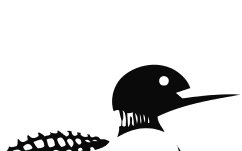
After the past provincial election in Quebec three years ago, the Parti Québécois was nearly left for dead, with only three members in the 125-seat National Assembly and a lowly 14.6 per cent of the votes. How things have changed since!
Monday evening, the PQ won a third byelection in a row, by a wide margin, despite their candidate facing strong opposition from the leader of the Quebec Conservative Party. “This reminds me of the Parti Québécois of the 1970s,” stated péquiste leader Paul St-Pierre Plamondon. Indeed, leading in the polls for several months now, the sovereigntist party has clearly become THE alternative to the unpopular government led by François Legault.
The byelection was held in the region of Arthabaska, situated between Montreal and Quebec City. Arthabaska-L’Érable is a semi-rural conservative riding, comprising the city of Victoriaville (population: 48,000).
Éric Duhaime, leader of the provincial Conservative Party, was hoping to win so that his small party would finally be represented in the National Assembly. Most commentators predicted a close race between Duhaime and the PQ candidate, journalist Alex Boissonneault. In fact, Boissonneault won easily with over 46 per cent of the vote, compared with 35 per cent for Duhaime. It is the first time since 1998, 27 years ago, that the riding has elected a Parti Québécois candidate.
Campaigning from door to door, Duhaime and the other candidates tried to tap in some voters’ fear of a third referendum on separation, as promised by Plamondon if the PQ forms the next government. In vain. To the contrary, there appears to be a surge of enthusiasm for independence, at least amongst young Quebecers.
This summer, surveys by two different polling firms put the support for separation at close to 50 per cent among voters aged 18 to 34 years old, a leap of some 15 percentage points compared with earlier polls. It is not clear what caused this sudden rise, but if it reflects reality, this will infuse the separatist movement with a tremendous amount of energy and enthusiasm. For a time seen as an outdated project, Quebec’s independence appears to be making a comeback, perceived by an increasing number of young people as an idea of the future, a solution to the province’s many problems (and theirs). Some even think that an independent Quebec would be in a better position to negotiate with Donald Trump, as baffling as that may sound.
The other major provincial parties did not fare well in the Arthabaska-L’Érable byelection, and their poor performance is a clear signal that they need to redress the boat quickly if they want to be competitive in the next general elections, scheduled for October 2026. The ruling Coalition Avenir Québec, which had previously won the riding with 52 per cent of the vote, saw its share of support crash down to seven per cent. This catastrophic score, combined with very poor polling results, brought Premier Legault to acknowledge Monday evening that Quebecers are not satisfied with his government. Legault, who appears set to continue to lead his party notwithstanding, will announce a major shuffle of his cabinet next month in the hopes that this may begin to turn things around. It is true that the outcome of the past federal election shows that nothing is impossible in politics; however, the premier cannot ignore the fact that that outcome was only made possible by a change at the helm of the Liberal Party of Canada.
Despite running a good local candidate and having a new, well-known leader in former federal minister Pablo Rodriguez, the Quebec Liberals received only 9.3 per cent of the vote in Arthabaska. This was sufficient to overtake the CAQ candidate in third place. Nonetheless, it was a very disappointing score for a party that currently forms the Official Opposition in the provincial parliament.
In his victory speech, PQ Leader Plamondon was careful to emphasize the issues that most Quebecers care about — the cost of living, the poor performance of public services, the government’s huge deficit — rather than separation. The péquistes can be counted on to propose concrete, original solutions to those problems. What ideas will the Liberals and other parties put forward? The Libs, in particular, will be tempted to use their time-tested strategy of agitating the referendum bogeyman in order to scare Quebecers away from the Parti Québécois; the results in Arthabaska-L’Érable are a clear indication that nowadays, such a simplistic tactic is not sufficient.
Polls show that despite the trend in favour of separation among young people, 60 per cent of Quebecers would vote NO to a referendum on independence (the same percentage as in the 1980 referendum). Still, Plamondon is steadfast in his commitment to hold a public consultation on sovereignty if he is chosen to lead the province’s next government. And Brexit has shown that once the referendum ball begins rolling, anything can happen.
National Post
























